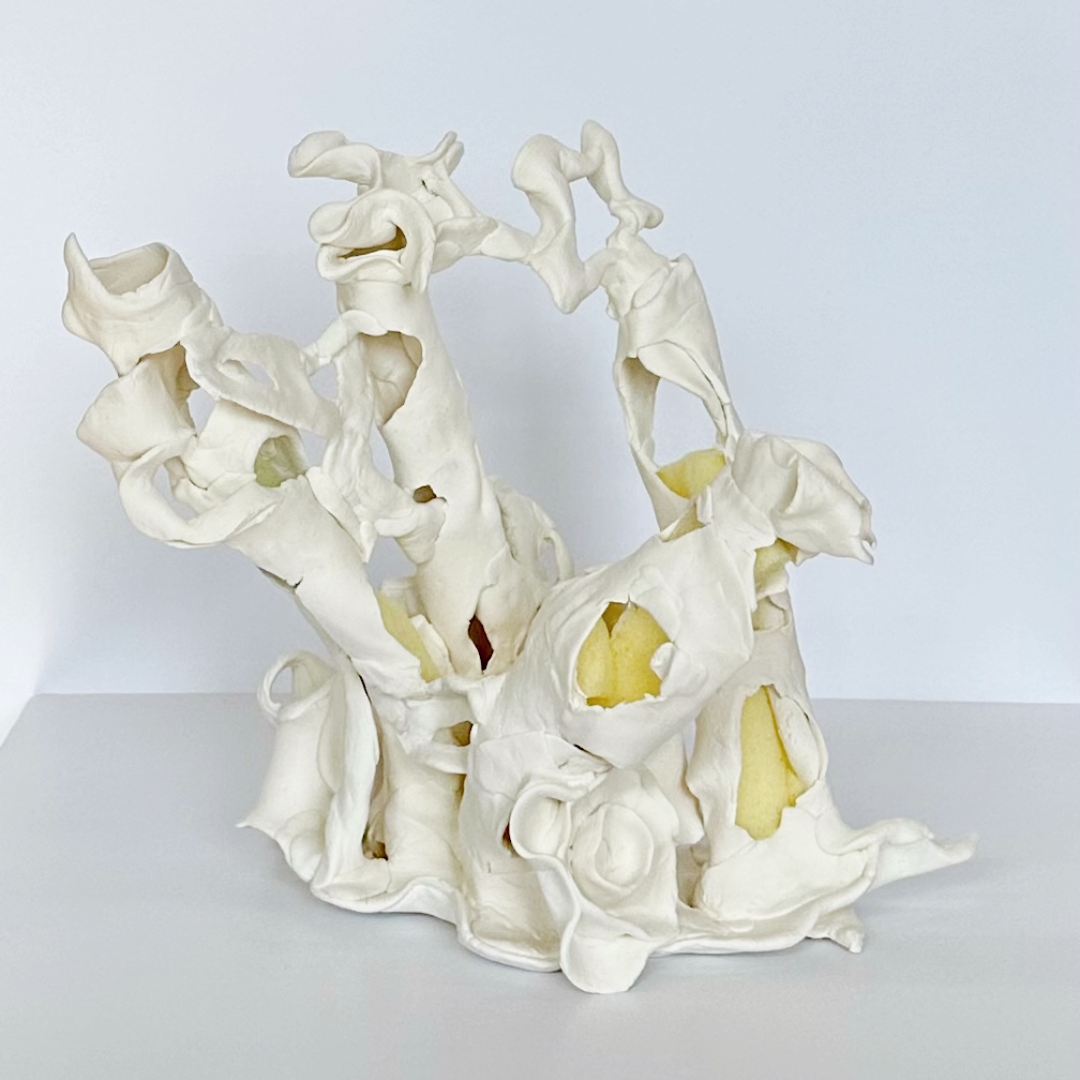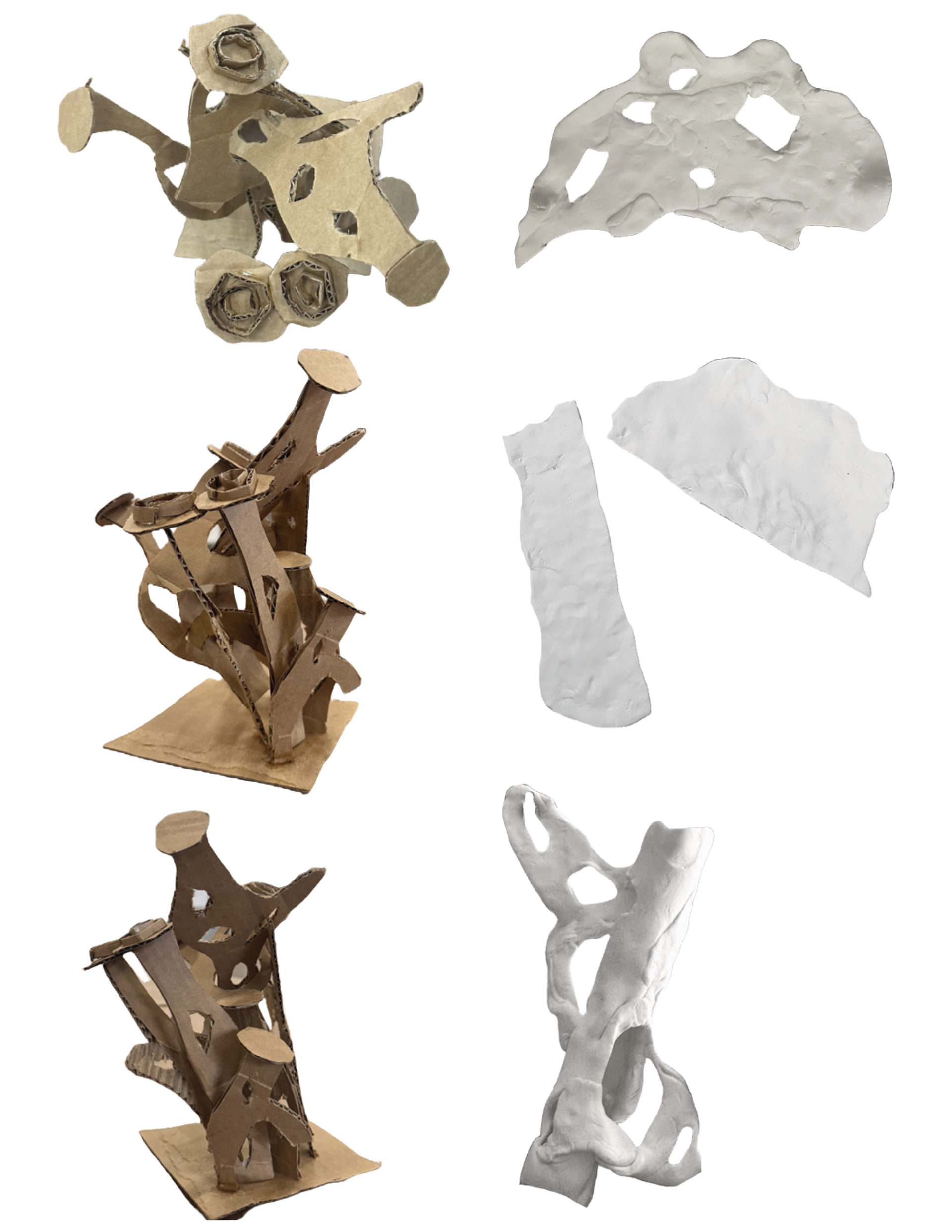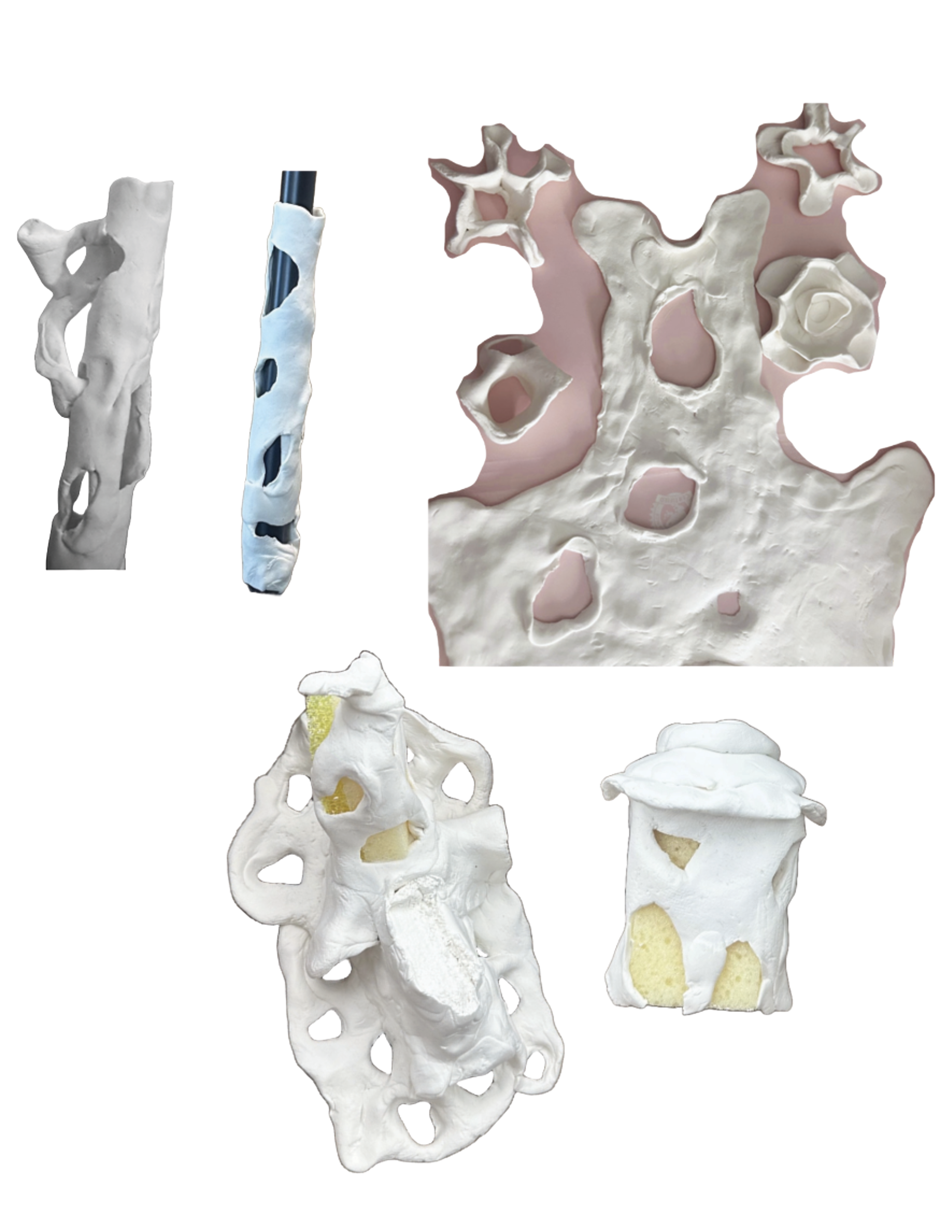A 3D physical artifact communicating the analyzed qualities, design applications, and implications of bone: the skeleton of evolutionary design and the ultimate example of iteration. We have used it for centuries as material for tools, & we now apply its wisdom to our biophilic structures.
According to Wolff’s Law, bone adapts to stressors & increased loading. I’m interested in the complex contradiction of bone - lightweight yet incredibily strong - and how it actively responds to the environment.
Wolff's Law - Final


Statement - "Bone is the skeleton of evolutionary design from which branching limbs emerge to form our earth’s phylogenetic tree. Without the evolution of bone, vertebrates may have never made it to land. Humans would have never evolved. It is a product of its own trial-and-error and a component of ours - the ultimate iteration and prototyping – and we have used it for centuries as material for products of our own creation. Humans continue to learn from bone. We study it and apply its wisdom to our structures. Then, we use our bones to make them.
In this three-dimensional model, I use a weaving structure of hollow, webbed branches and rings to capture the evolved complexity and contradiction of bone. Bone is airy yet structured; lightweight yet rigid; breakable yet able to heal. It strengthens the internal sponge in response to mechanical weight, followed by the outer cortical layer: a phenomenon known as ‘Wolff’s law’ which inspired the design of the model to provide resistance in response to lightweight pressure.
This incredible adaptability and responsiveness of bone, though not yet fully understood, offers a learning opportunity for future evolutions of design, as well as a base for future evolution itself."
Materials: Crayola Model Magic clay & dual-sided dish sponge.
Process:

Research

Brainstorming

Analog sketch

Low fidelity iterations

High fidelity iterations

